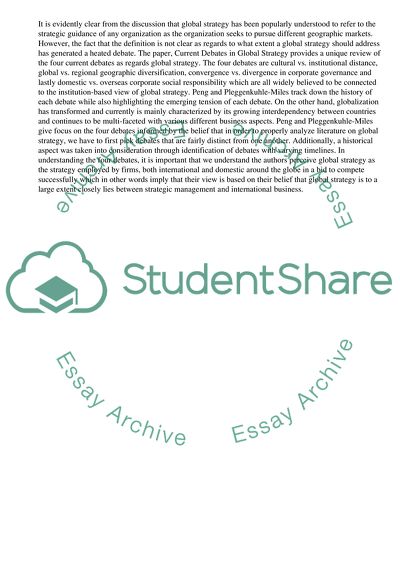Cite this document
(“Four Main Debates in the Field of Global Strategy by Peng and Essay”, n.d.)
Retrieved from https://studentshare.org/management/1672988-peng-and-pleggenkuhle-miles-2009-identify-four-main-debates-in-the-field-of-global-strategy-critically-evaluate-whether-their-approach-fully-captures-the-complexity-of-the-influences-of-globalization-on-global-strategy-reference-peng-m-and-plegge
Retrieved from https://studentshare.org/management/1672988-peng-and-pleggenkuhle-miles-2009-identify-four-main-debates-in-the-field-of-global-strategy-critically-evaluate-whether-their-approach-fully-captures-the-complexity-of-the-influences-of-globalization-on-global-strategy-reference-peng-m-and-plegge
(Four Main Debates in the Field of Global Strategy by Peng and Essay)
https://studentshare.org/management/1672988-peng-and-pleggenkuhle-miles-2009-identify-four-main-debates-in-the-field-of-global-strategy-critically-evaluate-whether-their-approach-fully-captures-the-complexity-of-the-influences-of-globalization-on-global-strategy-reference-peng-m-and-plegge.
https://studentshare.org/management/1672988-peng-and-pleggenkuhle-miles-2009-identify-four-main-debates-in-the-field-of-global-strategy-critically-evaluate-whether-their-approach-fully-captures-the-complexity-of-the-influences-of-globalization-on-global-strategy-reference-peng-m-and-plegge.
“Four Main Debates in the Field of Global Strategy by Peng and Essay”, n.d. https://studentshare.org/management/1672988-peng-and-pleggenkuhle-miles-2009-identify-four-main-debates-in-the-field-of-global-strategy-critically-evaluate-whether-their-approach-fully-captures-the-complexity-of-the-influences-of-globalization-on-global-strategy-reference-peng-m-and-plegge.


